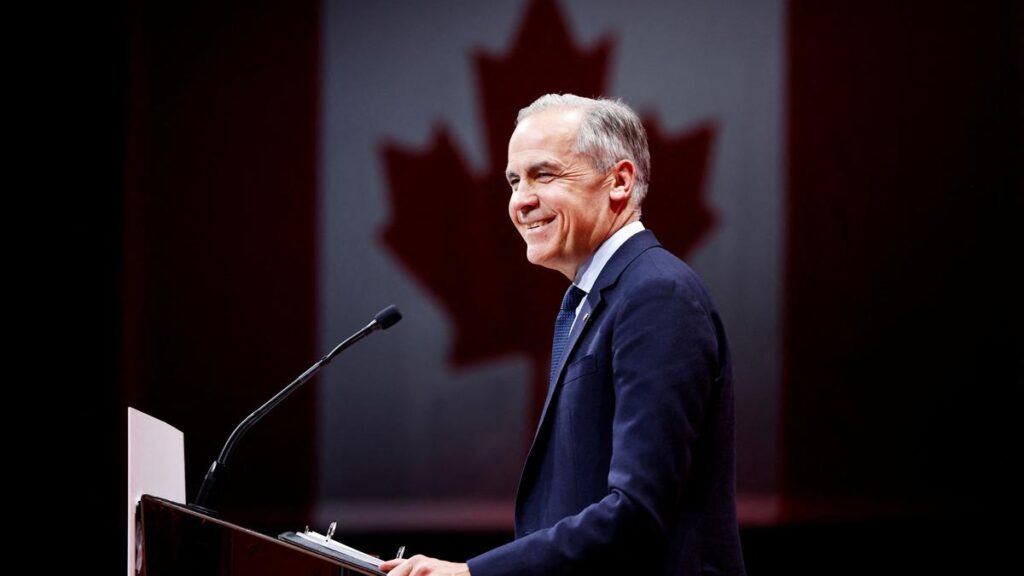Canada Election 2025 Results: Liberals Score Stunning Victory as Populist Leader Loses Seat

Canada Election 2025 Results: Liberals Score Stunning Victory as Populist Leader Loses Seat
A Historic Political Shift
In a landmark outcome that has surprised many across the country, the Canada Election 2025 results brought a resounding victory to the Liberal Party. Prime Minister Justin Trudeau will now lead a majority government after securing 174 of 338 seats. Meanwhile, James Wexford, the populist leader of the People’s Voice Party, suffered a crushing blow by losing his own seat.
Consequently, this election has significantly reshaped Canada’s political landscape, underscoring voters’ rejection of divisive politics and their preference for progressive, inclusive governance.
Liberals Surge Back to Majority
Although most pre-election polls predicted a tight race, the Liberals managed to exceed expectations. They not only retained key ridings but also flipped several swing districts in Ontario and British Columbia. As a result, they earned a clear majority, allowing them to pass legislation without forming coalitions.
Furthermore, the Liberals’ success came amid a higher-than-usual voter turnout of 68.2%, reflecting an engaged and concerned electorate.
“This is a mandate for unity and progress,” Trudeau announced at his victory rally in Montreal. “We will continue building a Canada that is fair, just, and inclusive for all.”
Populist James Wexford Defeated
In perhaps the most dramatic moment of the night, James Wexford, leader of the far-right People’s Voice Party, lost his seat in Red Plains, Alberta. Despite leading a fiery campaign focused on immigration restrictions and nationalist rhetoric, Wexford was defeated by Liberal newcomer Sarah Atkinson.
Moreover, his party dropped from 41 seats to just 12, signalling a major decline in public support. Many analysts say voters grew weary of his polarizing tone and lack of policy substance.
“We can disagree on policy, but we must stand united against hate,” said Atkinson in her acceptance speech. “This is a win for inclusion and compassion.”
Performance of Other Major Parties
While the Liberals celebrated, other parties experienced mixed results.
- The Conservative Party, led by Andrew Scheer, remained the official opposition with 112 seats.
- Meanwhile, the New Democratic Party (NDP) under Jagmeet Singh gained modestly, increasing their seat count to 38.
- In contrast, the Green Party secured only 2 seats, continuing a pattern of stagnation.
- Likewise, the Bloc Québécois maintained 34 seats, mostly within Quebec.
Nevertheless, none of the opposition parties made the breakthrough required to challenge the Liberals’ dominance.
Why the Liberals Won
Several factors contributed to the Liberals’ success:
- Strategic Messaging: The campaign consistently emphasized stability, healthcare expansion, and environmental leadership.
- Inclusive Tone: Trudeau’s team embraced voters from diverse backgrounds—including immigrants, racialized communities, Indigenous peoples, and LGBTQ+ Canadians.
- Targeted Campaigning: Notably, they focused on urban ridings, where voter turnout tends to be highest.
Additionally, they managed to portray Wexford’s rhetoric as a threat to national unity, which galvanized progressive voters.
“Voters rejected extremism and chose responsible governance,” said political analyst Lisa Thomason on CBC. “The Liberal campaign turned this election into a referendum on decency.”
Turning Point in Canadian Populism?
James Wexford’s defeat may mark a significant turning point in Canadian politics. For years, the People’s Voice Party had gained ground by appealing to economic uncertainty and cultural fears. However, this election exposed the limitations of that approach.
Increasingly, Canadians grew uncomfortable with the party’s language around immigrants, racialized groups, and marginalized communities. Consequently, voters in both suburban and rural districts rejected the divisive platform.
“Canadians have always valued diversity,” said University of Toronto professor Marcia Leung. “This election reaffirmed that commitment.”
Key Battlegrounds: Ontario and British Columbia
Two provinces played an especially decisive role in the Liberal victory.
In Ontario, particularly in the Greater Toronto Area, Liberals dominated by focusing on housing, healthcare, and education. Moreover, they benefited from strong support among new immigrants and younger voters.
In British Columbia, the emphasis was on environmental sustainability and Indigenous reconciliation. Liberal candidates tailored their platforms accordingly and were rewarded with unexpected wins in regions like Surrey and Burnaby.
Meanwhile, Conservative and NDP campaigns struggled to adapt their messaging to regional concerns.
Global Reaction and International Partnerships
The outcome has also caught global attention. U.S. President Joe Biden issued a congratulatory message, reaffirming strong bilateral ties. Similarly, European Union officials praised Trudeau’s re-election, emphasizing cooperation on climate change, trade, and human rights.
Notably, Trudeau’s leadership is viewed positively on the international stage, especially in multilateral forums like the G7 and United Nations.
👉 Read more about Canada’s electoral system on Elections Canada’s official website
What’s Next for the Trudeau Government?
Now that a majority has been secured, the Liberals are expected to move swiftly on several major issues:
- Introducing universal pharmacare
- Expanding affordable housing programs
- Strengthening climate change targets
- Continuing Indigenous reconciliation efforts
In addition, the Liberals may revisit electoral reform and foreign policy updates.
While the victory gives them a strong mandate, public expectations remain high. Therefore, their ability to deliver tangible results will define the next four years.
Final Thoughts
The Canada Election 2025 results have redefined the country’s political landscape. On one hand, the Liberals now hold a powerful majority. On the other, the fall of populist forces signals a widespread preference for unity, stability, and responsible leadership.
In conclusion, Canadians have clearly spoken. They want a country where compassion triumphs over fear, and where progress is inclusive—not divisive. Now, it’s up to Trudeau’s government to prove they can deliver on that promise.






